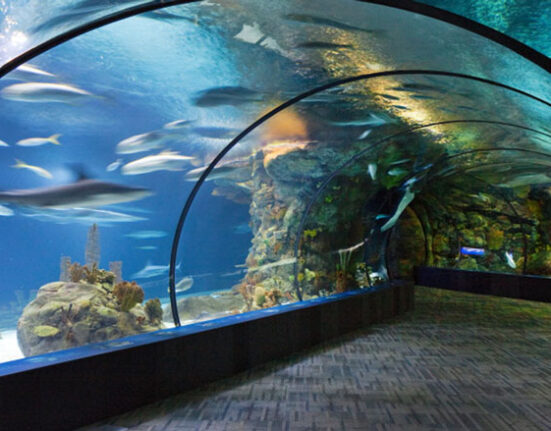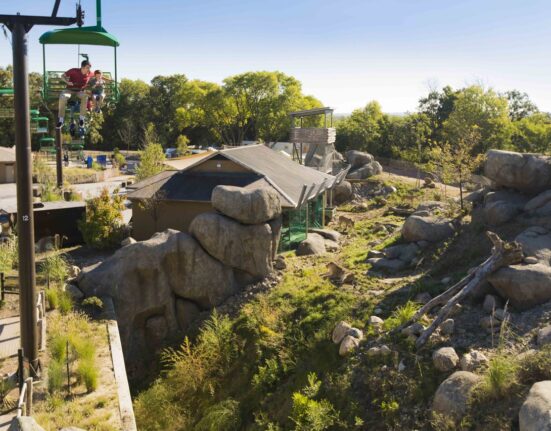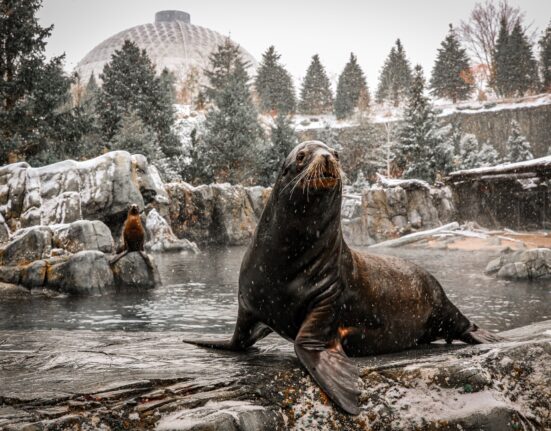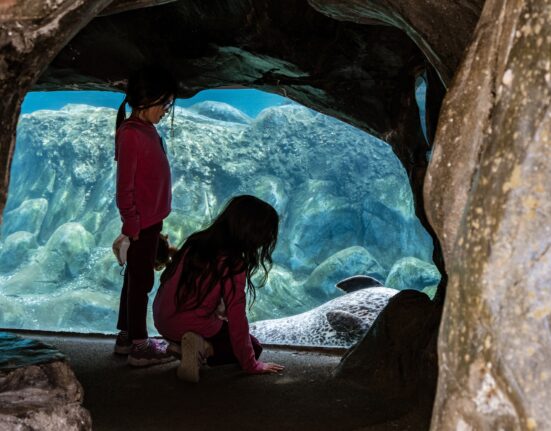Omaha’s Zoo and Aquarium’s Amphibian Conservation Area staff celebrates a milestone year with involvement in their first-ever repatriation effort for Western boreal toads and the release of their 100,000th amphibian into the wild.
The Zoo sent off 3,847 Western boreal toad tadpoles, metamorphs, and adults to the Utah Division of Wildlife Resources for release in the Paunsaugunt Plateau area near Bryce Canyon National Park on Wednesday, August 18, and Thursday, September 9.
This was the first time the Zoo has participated in a reintroduction effort for the Western Boreal Toad Recovery Program since signing on in 1995. The Zoo’s contribution was also the largest number of amphibians produced for release to date for the recovery program.
The Zoo’s success with Western boreal toads began in August 2020, when Amphibian Conservation Area staff spawned their first 30 toads.
With the help of Dr. Ruth Marcec-Greaves, the executive director of the Zoo-initiated Honduras Amphibian Research and Conservation Center, a new hormone protocol was implemented to increase fertilization and improve egg deposition among the Zoo’s population assurance colony for the species.
Cooler weather conditions prevented Zoo staff from sending the toadlets to their release site in Utah. Instead, the toadlets overwintered in the Amphibian Conservation Area, where staff prepared them for survival.
The photoperiod, temperature, humidity, and food sources in their enclosures were altered to mimic their would-be Utah lifestyle. Before applying natural substrates, such as clay and organic hides, simplistic layouts were used to test the toadlets’ feeding responses and ensure they were gaining enough weight.
Several basking sites were also added for thermoregulation. Amphibians are ectotherms, meaning they cannot produce sufficient internal heat to maintain a constant body temperature, which varies based on their surroundings.
By July 2021, the toadlets morphed into adults and another 3,847 tadpoles were born. Ultimately, multiple life stages of Western boreal toads were sent off for reintroduction over the past two months. Post-release monitoring will be conducted to determine which life stage has the best survival rate.
Western boreal toads are just one of at least six major amphibian recovery programs currently supported by the Amphibian Conservation Area, which opened its doors in 2006.
The Zoo, however, has played an active role in amphibian conservation since 1992, when the Wyoming Game and Fish Department provided the Zoo with its first shipment of Wyoming toads.
The Wyoming toad was once presumed extinct entirely. But in 1987, a small population was discovered at Mortenson Lake in Albany County, Wyoming.
With chytrid fungus, the leading cause of death among amphibian populations worldwide, and habitat destruction taking their toll, the last 10 remaining Wyoming toads in the wild were brought to the Cheyenne Mountain Zoo in 1989.
In 1991, the species was officially declared extinct in the wild and following the Nature Conservancy’s purchase and founding of Mortenson Lake National Wildlife Refuge in 1993, an ex-situ breeding program was established.
To promote the long-term sustainability of the species, the Wyoming Game and Fish Department enlisted the help of Omaha’s Henry Doorly Zoo and Aquarium and other zoos accredited by the Association of Zoos and Aquariums to start population assurance colonies, or in-house breeding populations, at their facilities.
Without a dedicated space at the time, the Zoo’s lone amphibian conservation keeper, a former train conductor for the Omaha Zoo Railroad, developed temperature-controlled holding areas out of basements in Mutual of Omaha’s Wild Kingdom Pavilion, the Lied Jungle, and Scott Aquarium.
This effort contributed to the first successful Wyoming toad reintroductions in 1995, with the release of 38 individuals at Mortenson Lake National Wildlife Refuge. That same year, Colorado Game and Wildlife recruited the Zoo’s expertise to help bolster the Western boreal toad population, which was also declining due to chytrid fungus and habitat destruction.
As assisted reproductive technologies, such as in-vitro fertilization, became available, the Zoo would go on to add the Puerto Rican crested toad, dusky gopher frog, Eastern hellbender and mountain yellow-legged frog to its roster of recovery programs. A number of head-start programs for local species, including the tiger salamander, were also formed.
The Amphibian Conservation Area was eventually established following the 2005 release of the International Union for Conservation of Nature’s Global Amphibian Assessment, an in-depth status report on the world’s 6,000-plus known frogs, toads, salamanders, and caecilians, which declared amphibians as the most significantly threatened group of vertebrates in the world.
The 4,200-square-foot facility—behind the scenes on the second floor of the Zoo’s Elevator Building—features 13 temperature-controlled rooms, a specialized wastewater treatment system, insect culturing area and thorough disinfecting protocols to ensure the entire space remains pathogen-free. With only three full-time keepers at the helm, the Amphibian Conservation Area has supported the release of 109,964 amphibians to date.







Leave feedback about this